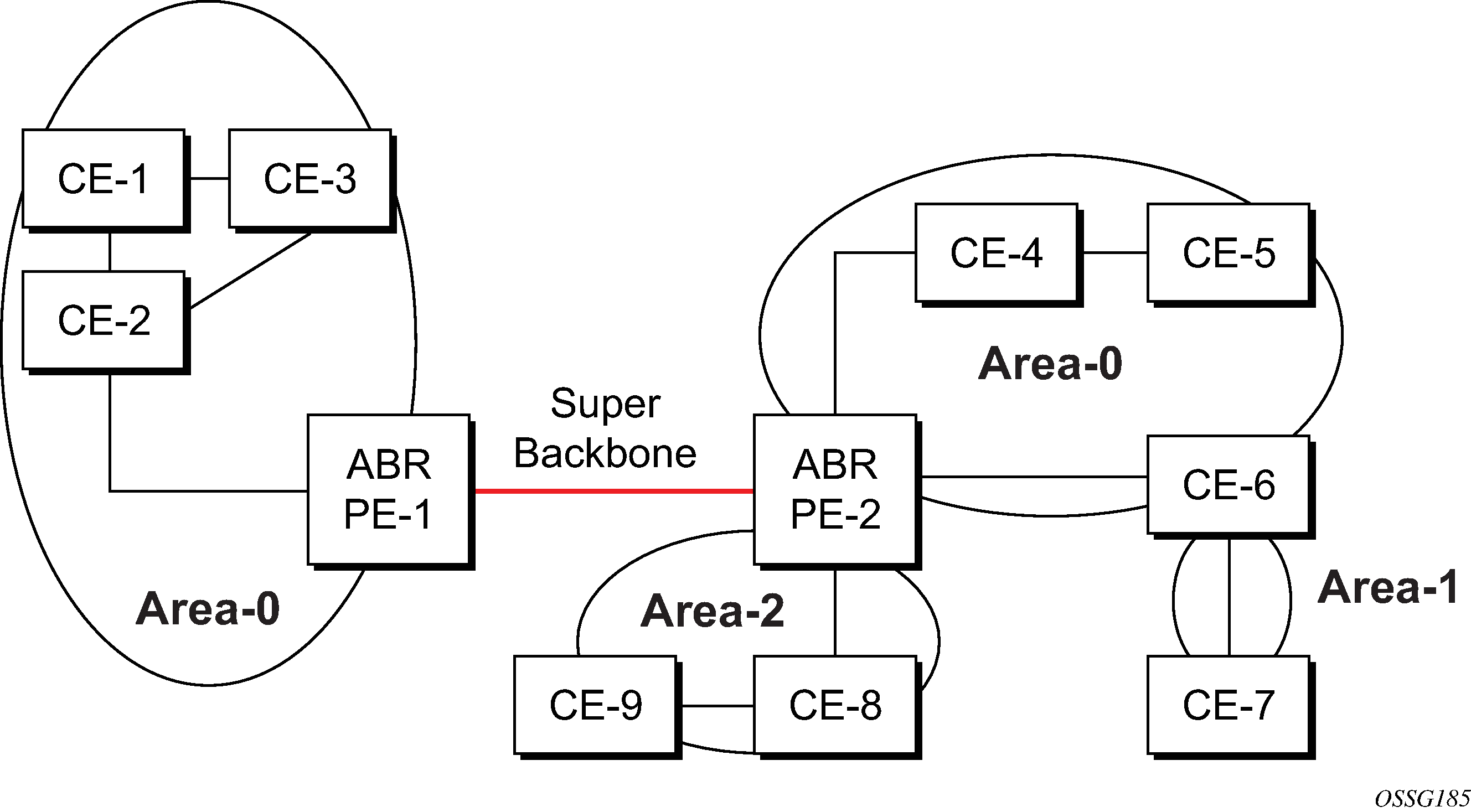The 77x0 PE routers have implemented a version of the BGP/OSPF interaction procedures as defined in RFC 4577, OSPF as the Provider/Customer Edge Protocol for BGP/MPLS IP Virtual Private Networks (VPNs). Features included in this RFC includes:
loop prevention
handling LSAs received from the CE
sham links
managing VPN-IPv4 routes received by BGP
VPRN routes can be distributed among the PE routers by BGP. If the PE uses OSPF to distribute routes to the CE router, the standard procedures governing BGP/OSPF interactions causes routes from one site to be delivered to another in type 5 LSAs, as AS-external routes.
The MPLS VPN super backbone behaves like an additional layer of hierarchy in OSPF. The PE-routers that connect the respective OSPF areas to the super backbone function as OSPF Area Border Routers (ABR) in the OSPF areas to which they are attached. To achieve full compatibility, they can also behave as AS Boundary Routers (ASBR) in non-stub areas.
The PE-routers insert inter-area routes from other areas into the area where the CE-router is present. The CE-routers are not involved at any level, nor are they aware of the super backbone or of other OSPF areas present beyond the MPLS VPN super backbone.
The CE always assumes the PE is an ABR:
If the CE is in the backbone, then the CE router assumes that the PE is an ABR linking one or more areas to the backbone.
If the CE in not in the backbone, then the CE believes that the backbone is on the other side of the PE.
As such, the super backbone looks like another area to the CE.
Figure: PEs connected to an MPLS-VPN super backbone
In Figure: PEs connected to an MPLS-VPN super backbone, the PEs are connected to the MPLS-VPN super backbone. To be able to distinguish if two OSPF instances are in fact the same and require Type 3 LSAs to be generated, or are two separate routing instances where type 5 external LSAs need to be generated, the concept of a domain-id is introduced.
The domain ID is carried with the MP-BGP update and indicates the source OSPF Domain. When the routes are being redistributed into the same OSPF Domain, the concepts of super backbone described above apply and Type 3 LSAs are generated. If the OSPF domain does not match, then the route type is external.
Configuring the super backbone (not the sham links) makes all destinations learned by PEs with matching domain IDs inter-area routes.
When configuring sham links, these links become intra-area routes if they are present in the same area.